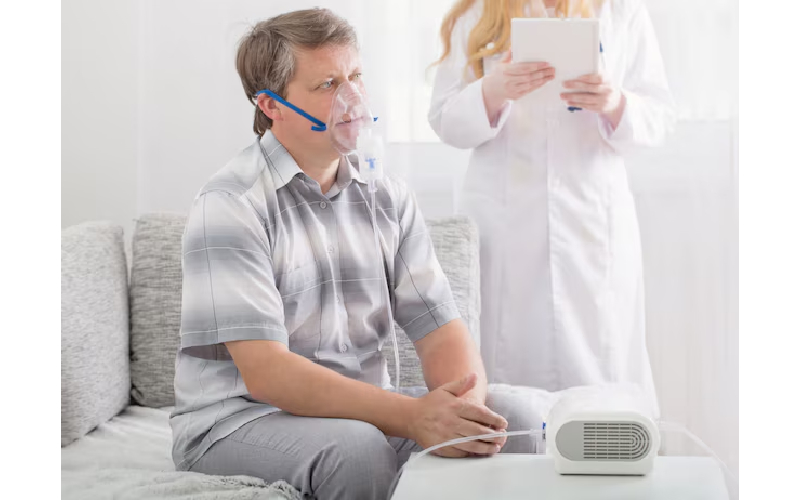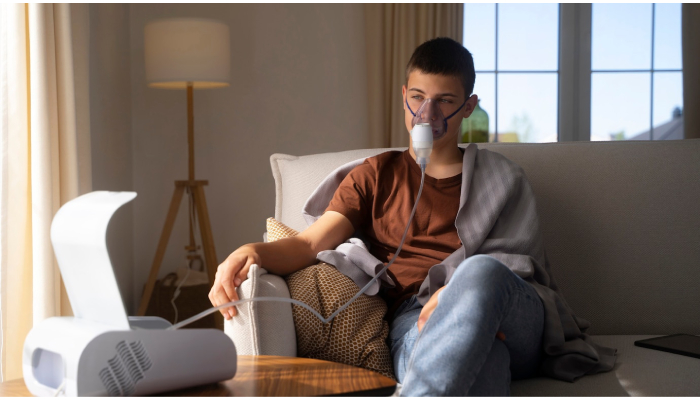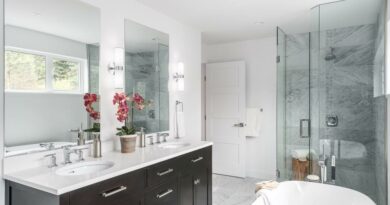Test For Sleep Apnea Easily With A Sleep Apnea Test At Home
Sleep apnea is a common sleep disorder that affects millions of people worldwide. It is characterized by repeated interruptions in breathing during sleep, leading to poor rest and various health complications. If left untreated, sleep apnea can contribute to severe conditions such as hypertension, heart disease, diabetes, and chronic fatigue. Diagnosing this condition early is crucial for effective management and treatment. Traditionally, sleep studies were conducted in specialized labs or hospitals, but advancements in technology have made it possible to conduct a sleep apnea test at home. This method provides a more accessible, convenient, and cost-effective approach to identifying sleep apnea.
Understanding The Sleep Apnea Test At Home
A sleep apnea test at home is a simple and effective way to determine if you have sleep apnea. Unlike traditional polysomnography (PSG) tests that require an overnight stay in a sleep clinic, home sleep apnea tests (HSAT) use portable diagnostic devices that measure essential physiological data while you sleep in your own bed. These tests typically monitor breathing patterns, oxygen levels, heart rate, and airflow to detect any abnormalities that indicate sleep apnea.

How Does A Home Sleep Apnea Test Work?
A home sleep apnea test involves using a small, portable monitoring device that records various data points throughout the night. The test process typically includes:
- A breathing sensor: Measures airflow and detects pauses in breathing.
- An oxygen sensor (pulse oximeter): Clips onto your finger to monitor oxygen saturation levels.
- Chest movement bands: Detects breathing effort and irregularities in respiratory patterns.
- Heart rate monitor: Tracks heart rate fluctuations during sleep.
The data collected by these devices is then analyzed by sleep specialists to determine whether sleep apnea is present and its severity.
Benefits Of A Sleep Apnea Test At Home
Opting for a sleep apnea test at home comes with several advantages, including:
Convenience And Comfort
Home sleep tests allow you to sleep in your familiar environment rather than an unfamiliar sleep lab. This makes the test more comfortable and provides more natural results compared to a clinical setting.
Cost-Effectiveness
Traditional in-lab sleep studies can be expensive due to facility fees and overnight monitoring. A sleep apnea test at home is significantly more affordable and may be covered by insurance.
Easy Accessibility
For individuals living in remote areas or those with mobility issues, traveling to a sleep clinic can be challenging. Home sleep tests provide a viable alternative that eliminates the need for long commutes.
Quick And Efficient Diagnosis
Most home sleep apnea tests provide results within a few days, allowing for a faster diagnosis and treatment plan compared to scheduling an in-lab test.
Who Should Consider A Sleep Apnea Test At Home?
A sleep apnea test at home is recommended for individuals experiencing symptoms such as:
- Loud snoring
- Frequent pauses in breathing during sleep (observed by a partner)
- Daytime sleepiness and fatigue
- Morning headaches
- Difficulty concentrating
- High blood pressure
- Irritability and mood changes
If you have risk factors such as obesity, a family history of sleep apnea, or a history of cardiovascular disease, a home sleep apnea test can help identify the disorder early.
How To Prepare For A Home Sleep Apnea Test?
To ensure accurate results, follow these preparation tips before taking a sleep apnea test at home:
- Avoid caffeine and alcohol: These substances can interfere with sleep patterns and breathing.
- Follow normal sleep routines: Stick to your regular bedtime to capture typical sleep behavior.
- Place the sensors correctly: Ensure that all components are properly attached as instructed.
- Sleep in a comfortable position: Try to maintain your usual sleeping posture to get the most accurate readings.
Understanding Your Test Results
After completing the sleep apnea test at home, the collected data is sent to a sleep specialist for analysis. The results will indicate:
- Apnea-Hypopnea Index (AHI): Measures the number of apnea (complete pause in breathing) and hypopnea (shallow breathing) episodes per hour.
- Oxygen Desaturation Index (ODI): Shows how often oxygen levels drop during sleep.
- Heart rate fluctuations: Provides insights into potential cardiovascular stress.
If the results indicate mild to moderate sleep apnea, lifestyle changes or continuous positive airway pressure (CPAP) therapy may be recommended. In severe cases, a more in-depth sleep study or medical intervention may be necessary.
Next Steps After A Home Sleep Apnea Test
Once you receive your results, consult a sleep specialist or physician to discuss the next steps. Possible treatments include:
- CPAP Therapy: The most common treatment for sleep apnea, using a machine that delivers continuous airflow to keep the airway open.
- Oral Appliances: Custom-fitted dental devices that reposition the jaw to prevent airway collapse.
- Lifestyle Modifications: Weight loss, positional therapy, and avoiding alcohol/sedatives can help reduce symptoms.
- Surgical Options: In severe cases, procedures like tonsil removal or upper airway surgery may be considered.
Conclusion
A sleep apnea test at home offers a practical, comfortable, and cost-effective method to diagnose sleep apnea without the need for an overnight stay in a sleep clinic. If you experience symptoms such as snoring, daytime fatigue, or breathing interruptions during sleep, taking a home test can be a critical first step toward improving your sleep quality and overall health. Consult with your healthcare provider to determine if a home sleep apnea test is right for you and explore treatment options tailored to your needs.




